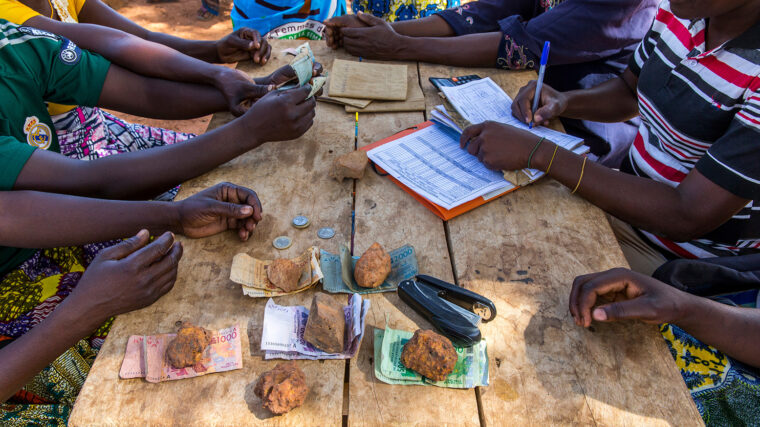Introduction
The population o f developing nations struggles with prolonged issues, which include gender-based financial isolation and societal differences, and restricted access to existing resources. Women typically contribute to maintaining household and community health, but their involvement in economic decision-making and activities remains limited. Microfinance has risen as a useful solution that helps reduce gender disparities in social systems. Microfinance institutions help underserved populations, mainly women, to gain financial independence through small loans and savings schemes as well as credit access.
The research described in this article draws from my MBA thesis, which studied microfinance effects on women’s empowerment in Nepal’s rural areas. This research evaluated the effects that microfinance programs have on women’s economic status and social position, along with their individual growth.
Purpose and Methodology
This research investigated the empowerment effects of microfinance programs upon women by analyzing financial benefits together with social influence, and psychological changes. The researcher obtained data through structured questionnaires from 60 Nepalese women who resided in rural areas, along with semi-urban locations. The combination of primary interviews with secondary literature provided sufficient evidence for studying microfinance’s multiple effects.
- Economic Empowerment: examining income generation, asset ownership, and financial independence.
- Social Empowerment: analyzing shifts in household & community decision-making roles.
- Psychological Empowerment – evaluating changes in self-confidence, awareness of rights, and self-perception.
The study utilized quantitative research as its method for collecting valuable information. The study distributed a structured questionnaire to 60 women borrowers who were microfinance institution clients throughout different rural and semi-urban areas of Nepal. The research focused on primary interview data for evaluating the effects of microfinance on both personal and professional dimensions of the participants. The author reviewed secondary sources that consisted of journal articles, along with reports focusing on worldwide microfinance trend patterns.
Key Findings and Insights
Study evidence shows microfinance access provides essential power to women through economic and social empowerment as well as psychological improvement. Through microfinance, women developed income sources while acquiring a greater sense of independence, in addition to growing self-assurance and community involvement. Women achieved better household decision-making power together with expanded community leadership positions as well as personal development through public speaking and independent travel. The success of microfinance programs requires improved business training and enhanced repayment methods since participants currently face implementation barriers.
Economic Gains: The majority of respondents used microloans to create or develop small businesses based in livestock farming, tailoring, vegetable retail, and small grocery stores. The new businesses using microloans boosted their earnings to become important sources of household budget income. The beneficiaries learned to control their earnings, and this brought about both independence and pride.
Improved Social Standing: The enrollment in microfinance initiatives frequently expanded access for women to take part in domestic decision-making processes. Through their participation in microfinance programs, women gained involvement in important household decisions about children’s education, together with healthcare spending and investments. Local savings groups and community committees received women as leaders, while cooperative organizations witnessed the transition of women from passive to active social participation.
Psychological Transformation: People experienced one of the most substantial improvements at the psychological level. Participating women gained enhanced confidence along with self-awareness and family and community respect. They performed their first independent travel and public speech, and financial dealings. Small steps carried great value as participants worked towards developing their empowerment.
The research detected multiple obstacles despite its main findings. The loan repayment caused issues to a minor number of women because their businesses failed to perform as expected or they used the money to meet urgent family matters. Their limited business sustainability was attributed to the fact that most women participants did not receive professional financial education or entrepreneurship training.
Practical Takeaways and Recommendations
The research results present strategies that maximize the positive effects microfinance has on women’s empowerment. The empowerment of women entrepreneurs through microfinance requires additional support systems that specifically tackle their specific entrepreneurial difficulties. Financial stakeholders should implement three strategies, including financial education programs and social lending methods, together with customized products, to increase the efficiency of their system. These useful recommendations work toward changing basic financial services into an effective long-term platform for social and economic transformation.
- Offer financial literacy training alongside credit access to improve business planning and loan utilization.
- Promote group lending and community-based models, which build solidarity and shared responsibility.
- Design gender-sensitive financial products, including flexible repayment schedules and accessible savings schemes.
- Link microfinance with other empowerment programs, such as legal rights education, vocational training, and health awareness.
By adopting a holistic approach, microfinance programs can evolve from being just financial tools to becoming vehicles of social transformation.
Conclusion
The Nepalese findings establish microfinance as something greater than financial loans because it supports individuals toward economic independence, along with personal strength and societal membership. Through the correct implementation of microfinance programs, the potential of women begins to develop into leadership positions as well as economic growth and societal change. For microfinance to maximize its benefits, it needs continuous support from institutions that combine education with basic infrastructure development. Institutional and governmental, and social support must make a sustained commitment because empowering women extends beyond one event and demands ongoing dedication.
Final Thoughts
The path to sustainable development depends critically on empowering women, both morally and developmentally. Through microfinance investments in women, the research proves that benefits extend through multiple generations, which creates better conditions for female lives and their families and communities. When women thrive, societies prosper. Microfinance stands as a foundational instrument for constructing societies across developing regions when it exists as an ethical implementation method and through thoughtful planning.



